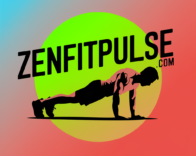
Knowledge is power, so knowing the 5 Key Components of Health and Health-related fitness is a multifaceted concept that encompasses various aspects of our physical and mental state. By understanding and embracing these components, we unlock the potential to lead a vibrant, energetic, and fulfilling life. In this article, I will guide you through the five key pillars of health-related fitness, empowering you to embark on a transformative journey toward optimal wellness.
The importance of health-related fitness

Health-related fitness is not only the latest trend but a fundamental necessity for thriving in today’s fast-paced world.So this 5 Key Components of Health is ver crucial. Neglecting our physical and mental well-being can lead to a myriad of health issues, ranging from chronic diseases to decreased productivity and overall dissatisfaction with life. By embracing a holistic approach to fitness, we equip ourselves with the tools to combat stress, boost energy levels, and cultivate a sense of vitality that permeates every aspect of our existence and continue to be fit for life.
The 5 key components of health-related fitness
Cardiovascular endurance

Cardiovascular endurance, often referred to as aerobic fitness, is the cornerstone of a healthy heart and respiratory system and main stay of 5 Key Components of Health It measures our ability to engage in prolonged physical activities that elevate our heart rate and breathing. Activities such as running, cycling, swimming, or even brisk walking can contribute to improved cardiovascular endurance, reducing the risk of heart disease, stroke, and other cardiovascular-related conditions.
Muscular endurance
While muscular strength focuses on maximum force, muscular endurance measures our ability to sustain repeated muscle contractions over an extended period. This component is essential for activities that require prolonged physical exertion, such as hiking, gardening, or even carrying groceries. By incorporating exercises that challenge our muscular endurance, we cultivate resilience and stamina, enabling us to tackle life’s demands with unwavering vigor.
Flexibility

Flexibility is often overlooked, yet it plays a pivotal role in our overall well-being. It refers to the range of motion around our joints and the ability of our muscles to stretch and lengthen. Improved flexibility not only reduces the risk of injury but also enhances our posture, balance, and coordination. Stretching exercises, yoga, and activities like dance or martial arts can help us maintain and improve our flexibility.
Body composition
Last but not the least the major components of 5 Key Components of Health is body composition, which is the ratio of lean body mass (muscle, bone, and vital organs) to body fat. Maintaining a healthy body composition is crucial for optimal health, as excess body fat can increase the risk of various chronic conditions, such as heart disease, diabetes, and certain types of cancer. Through a balanced diet and regular exercise, we can achieve a favorable body composition, boosting our energy levels, self-confidence, and overall quality of life.
Assessing your health-related fitness
Before embarking on your fitness journey, it is essential to assess your current level of health-related fitness. This can be achieved through various methods, including fitness tests, body composition analysis, and consultations with healthcare professionals. By understanding your starting point, you can set realistic goals and tailor your fitness routine to address your specific needs and areas for improvement.
Incorporating the 5 components into your fitness routine
To truly unlock the benefits of health-related fitness, it is crucial to incorporate all five components into your routine. Here are some tips to help you get started:
Cardiovascular endurance:
Engage in activities that elevate your heart rate, such as running, cycling, swimming, or high-intensity interval training (HIIT).
Muscular strength:
Incorporate resistance training exercises using weights, resistance bands, or bodyweight exercises like push-ups and squats.
Muscular endurance:
Perform exercises that target specific muscle groups for an extended period, such as planks, wall-sits, or high-repetition weightlifting
Flexibility:
Dedicate time for stretching and mobility exercises before and after your workouts, or consider incorporating yoga or Pilates into your routine.
Body composition:
Combine a balanced diet with regular exercise to maintain a healthy ratio of lean body mass to body fat.
Remember, consistency is key. Aim to incorporate these components into your routine gradually, allowing your body to adapt and progress at a sustainable pace
Tips for improving each component
- Cardiovascular endurance:
- Gradually increase the duration and intensity of your cardio sessions.
- Incorporate interval training to challenge your cardiovascular system.
- Cross-train by engaging in different types of cardio activities.
- Muscular strength:
- Progressively increase the weight or resistance in your strength training exercises.
- Focus on proper form to target the intended muscle groups effectively.
- Allow for adequate rest and recovery between strength training sessions.
- Muscular endurance:
- Increase the number of repetitions or sets in your endurance exercises.
- Incorporate compound exercises that engage multiple muscle groups simultaneously.
- Vary the tempo and intensity of your endurance training.
- Flexibility:
- Incorporate dynamic stretching before your workouts and static stretching after.
- Explore different stretching techniques, such as foam rolling or yoga poses.
- Be patient and consistent with your flexibility training, as improvements take time.
- Body composition:
- Monitor your caloric intake and macronutrient ratios (proteins, carbohydrates, and fats).
- Incorporate resistance training to build lean muscle mass.
- Stay hydrated and prioritize quality sleep for optimal recovery and metabolism.
The benefits of maintaining health-related fitness
Embracing the 5 Key Components of Health fitness offers a multitude of benefits that extend far beyond physical appearance. By committing to this holistic approach, you can expect:
- Increased energy levels and stamina
- Improved mental clarity and focus
- Reduced risk of chronic diseases
- Enhanced self-confidence and body image
- Better sleep quality and stress management
- Improved overall quality of life
Remember, health is not a destination but a continuous journey. By prioritizing health-related fitness, you embark on a transformative path that empowers you to live life to the fullest, embracing every moment with vigor and vitality.
Conclusion

In the ever-evolving landscape of health and wellness, embracing the five key components of health-related fitness is a powerful investment in your overall well-being. By nurturing cardiovascular endurance, muscular strength, muscular endurance, flexibility, and maintaining a healthy body composition, you unlock a world of boundless energy, resilience, and vitality.
Remember, this journey is not a sprint but a lifelong marathon, and every step you take towards improving your health-related fitness is a step closer to realizing your full potential. Embrace the challenges, celebrate the milestones, and revel in the profound impact that a holistic approach to fitness can have on your life.
So, take that first step today, please consider with top priority that 5 Key Components of Health, and then embark on a transformative adventure that will uplift your mind, body, and spirit. The path to optimal health awaits, and the power to unlock your true potential lies within you.
Discover more from zenfitpulse
Subscribe to get the latest posts sent to your email.


Pingback: Your Final Weight Loss Diet Chart: A Big Surprise Is Here
Pingback: Secure Your Future With Health Tests For Life Insurance